Self-Healing Mechanical Properties of Selected Roofing Felts
Abstract
1. Introduction
2. Analyzed Materials
3. Methodology
3.1. Samples Preparation
3.2. Heating Process
4. Results
5. Conclusions
Author Contributions
Funding
Institutional Review Board Statement
Informed Consent Statement
Data Availability Statement
Conflicts of Interest
References
- Hamoudi, H.; Berdiyorov, G.R.; Zekri, A.; Tong, Y.; Mansour, S.; Esaulov, V.A.; Youcef-Toumi, K. Building block 3D printing based on molecular self-assembly monolayer with self-healing properties. Sci. Rep. 2022, 12, 6806. [Google Scholar] [CrossRef] [PubMed]
- Zhang, Y.; Wang, R.; Ding, Z. Influence of Crystalline Admixtures and Their Synergetic Combinations with Other Constituents on Autonomous Healing in Cracked Concrete—A Review. Materials 2022, 15, 440. [Google Scholar] [CrossRef]
- D’Souza, A.; Marshall, L.R.; Yoon, J.; Kulesha, A.; Edirisinghe, D.I.U.; Chandrasekaran, S.; Rathee, P.; Prabhakar, R.; Makhlynets, O.V. Peptide hydrogel with self-healing and redox-responsive properties. Nano Converg. 2022, 9, 18. [Google Scholar] [CrossRef] [PubMed]
- Liu, Y.; Chen, T.; Jin, Z.; Li, M.; Zhang, D.; Duan, L.; Zhao, Z.; Wang, C. Tough, stable and self-healing luminescent perovskite-polymer matrix applicable to all harsh aquatic environments. Nat. Commun. 2022, 13, 1338. [Google Scholar] [CrossRef] [PubMed]
- Hardman, D.; George Thuruthel, T.; Iida, F. Self-healing ionic gelatin/glycerol hydrogels for strain sensing applications. NPG Asia Mater. 2022, 14, 11. [Google Scholar] [CrossRef]
- Liang, Y.; Wu, Z.; Wei, Y.; Ding, Q.; Zilberman, M.; Tao, K.; Xie, X.; Wu, J. Self-Healing, Self-Adhesive and Stable Organohydrogel-Based Stretchable Oxygen Sensor with High Performance at Room Temperature. Nano-Micro Lett. 2022, 14, 52. [Google Scholar] [CrossRef]
- Guo, Q.; Qiu, X.; Zhang, X. Recent Advances in Electronic Skins with Multiple-Stimuli-Responsive and Self-Healing Abilities. Materials 2022, 15, 1661. [Google Scholar] [CrossRef]
- Peng, X.; Wang, W.; Yang, W.; Chen, J.; Peng, Q.; Wang, T.; Yang, D.; Wang, J.; Zhang, H.; Zeng, H. Stretchable, compressible, and conductive hydrogel for sensitive wearable soft sensors. J. Colloid Interface Sci. 2022, 618, 111–120. [Google Scholar] [CrossRef]
- Chen, C.; Wang, Y.; Zhang, H.; Zhang, H.; Dong, W.; Sun, W.; Zhao, Y. Responsive and self-healing structural color supramolecular hydrogel patch for diabetic wound treatment. Bioact. Mater. 2022, 15, 194–202. [Google Scholar] [CrossRef]
- Yuca, N.; Kalafat, I.; Guney, E.; Cetin, B.; Taskin, O.S. Self-Healing Systems in Silicon Anodes for Li-Ion Batteries. Materials 2022, 15, 2392. [Google Scholar] [CrossRef]
- Coppola, L.; Beretta, S.; Bignozzi, M.C.; Bolzoni, F.; Brenna, A.; Cabrini, M.; Candamano, S.; Caputo, D.; Carsana, M.; Cioffi, R.; et al. The Improvement of Durability of Reinforced Concretes for Sustainable Structures: A Review on Different Approaches. Materials 2022, 15, 2728. [Google Scholar] [CrossRef] [PubMed]
- Amran, M.; Onaizi, A.M.; Fediuk, R.; Vatin, N.I.; Rashid, R.S.M.; Abdelgader, H.; Ozbakkaloglu, T. Self-Healing Concrete as a Prospective Construction Material: A Review. Materials 2022, 15, 3214. [Google Scholar] [CrossRef] [PubMed]
- Van Tittelboom, K.; De Belie, N. Self-healing in cementitious materials-a review. Materials 2013, 6, 2182–2217. [Google Scholar] [CrossRef] [PubMed]
- Mao, Q.; Chen, J.; Qi, W.; Liu, H.; Wang, Z.; Cui, S. Improving Self-Healing and Shrinkage Reduction of Cementitious Materials Using Water-Absorbing Polymer Microcapsules. Materials 2022, 15, 847. [Google Scholar] [CrossRef]
- Yang, D.; Xu, G.; Duan, Y.; Dong, S. Self-healing cement composites based on bleaching earth immobilized bacteria. J. Clean. Prod. 2022, 358, 132045. [Google Scholar] [CrossRef]
- Kim, R.; Woo, U.; Shin, M.; Ahn, E.; Choi, H. Evaluation of self-healing in concrete using linear and nonlinear resonance spectroscopy. Constr. Build. Mater. 2022, 335, 127492. [Google Scholar] [CrossRef]
- Zhang, H.; Wang, Q.; Li, Y.; Mao, J.; Zheng, X. Preparation and characterization of damage indication and self-healing microcapsules for surface micro-cracks in mortar coating. J. Appl. Polym. Sci. 2022, 139, 52198. [Google Scholar] [CrossRef]
- Tanyildizi, H.; Ziada, M.; Uysal, M.; Doğruöz Güngör, N.; Coşkun, A. Comparison of bacteria-based self-healing methods in metakaolin geopolymer mortars. Case Stud. Constr. Mater. 2022, 16, e00895. [Google Scholar] [CrossRef]
- Wu, M.; Hu, X.; Zhang, Q.; Zhao, Y.; Liang, Y.; Wang, W.; Tian, F. Self-healing performance of concrete for underground space. Mater. Struct. Constr. 2022, 55, 122. [Google Scholar] [CrossRef]
- Wang, T.; Zhang, D.; Zhu, H.; Ma, B.; Li, V.C. Durability and self-healing of engineered cementitious composites exposed to simulated sewage environments. Cem. Concr. Compos. 2022, 129, 104500. [Google Scholar] [CrossRef]
- Oh, S.; Lee, K.; Choi, S.; Choi, Y. Fundamental Properties and Self-Healing Performance of Repair Mortar with Solid Capsules Made Using Inorganic Reactive Powder. Materials 2022, 15, 1710. [Google Scholar] [CrossRef] [PubMed]
- Tesfamariam, B.B.; Seyoum, R.; Andoshe, D.M.; Terfasa, T.T.; Ahmed, G.M.S.; Badruddin, I.A.; Khaleed, H.M.T. Investigation of Self-Healing Mortars with and without Bagasse Ash at Pre-and Post-Crack Times. Materials 2022, 15, 1650. [Google Scholar] [CrossRef]
- Litina, C.; Bumanis, G.; Anglani, G.; Dudek, M.; Maddalena, R.; Amenta, M.; Papaioannou, S.; Pérez, G.; Calvo, J.L.G.; Asensio, E.; et al. Evaluation of methodologies for assessing self-healing performance of concrete with mineral expansive agents: An interlaboratory study. Materials 2021, 14, 2024. [Google Scholar] [CrossRef] [PubMed]
- Alshalif, A.F.; Juki, M.I.; Tajarudin, H.A.; Othman, N.; Al-Gheethi, A.A.; Shamsudin, S.; Altowayti, W.; Sabah, S.A. Optimisation of self-healing of bio-foamed concrete bricks pores using Bacillus tequilensis under different temperature and CO2 curing conditions. Sci. Rep. 2022, 12, 2682. [Google Scholar] [CrossRef] [PubMed]
- Nishiwaki, T.; Kwon, S.; Homma, D.; Yamada, M.; Mihashi, H. Self-healing capability of fiber-reinforced cementitious composites for recovery of watertightness and mechanical properties. Materials 2014, 7, 2141–2154. [Google Scholar] [CrossRef] [PubMed]
- Hager, M.D.; Greil, P.; Leyens, C.; Van Der Zwaag, S.; Schubert, U.S. Self-healing materials. Adv. Mater. 2010, 22, 5424–5430. [Google Scholar] [CrossRef]
- Cheng, M.; Fu, Q.; Tan, B.; Ma, Y.; Fang, L.; Lu, C.; Xu, Z. Build a bridge from polymeric structure design to engineering application of self-healing coatings: A review. Prog. Org. Coat. 2022, 167, 106790. [Google Scholar] [CrossRef]
- Khushnood, R.A.; Ali, A.M.; Faraz Bhatti, M.; Ahmed Khan, H. Self-healing fungi concrete using potential strains Rhizopus oryzae and Trichoderma longibrachiatum. J. Build. Eng. 2022, 50, 104155. [Google Scholar] [CrossRef]
- Nodehi, M.; Ozbakkaloglu, T.; Gholampour, A. A systematic review of bacteria-based self-healing concrete: Biomineralization, mechanical, and durability properties. J. Build. Eng. 2022, 49, 104038. [Google Scholar] [CrossRef]
- Kim, D.J.; Kang, S.H.; Ahn, T. Mechanical Characterization of High-Performance Steel-Fiber Reinforced Cement Composites with Self-Healing Effect. Materials 2014, 7, 508–526. [Google Scholar] [CrossRef]
- Koleva, D.A. An innovative approach to control steel reinforcement corrosion by self-healing. Materials 2018, 11, 309. [Google Scholar] [CrossRef]
- Sun, J.; Li, W.; Zhan, Y.; Tian, L.; Tian, H. Two preparation processes for anti-corrosion and self-healing epoxy coatings containing the poly (calcium alginate) microcapsules loaded with tung oil. Colloids Surfaces A Physicochem. Eng. Asp. 2022, 641, 128600. [Google Scholar] [CrossRef]
- Poornima Vijayan, P.; Al-Maadeed, M. Self-repairing composites for corrosion protection: A review on recent strategies and evaluation methods. Materials 2019, 12, 2754. [Google Scholar]
- Grabowski, B.; Tasan, C.C. Self-healing metals. Adv. Polym. Sci. 2016, 273, 387–408. [Google Scholar]
- Cao, Y.; Yuan, X.; Wang, X.; Wu, H.; Wang, G.; Yang, H. Improving the self-healing performance of the water-borne epoxy anticorrosion coating in 3.5 wt NaCl solution using acid and alkaline dual sensitive organic microspheres. Prog. Org. Coat. 2022, 167, 106815. [Google Scholar] [CrossRef]
- Ouarga, A.; Lebaz, N.; Tarhini, M.; Noukrati, H.; Barroug, A.; Elaissari, A.; Ben Youcef, H. Towards smart self-healing coatings: Advances in micro/nano-encapsulation processes as carriers for anti-corrosion coatings development. J. Mol. Liq. 2022, 354, 118862. [Google Scholar] [CrossRef]
- Gao, X.; Lv, Y.; Ma, H.; Ma, H. Novel high-performance and long-life anti-corrosion coating with rust conversion and self-healing characteristics based on waste biomass derived carbon nanosheets. Prog. Org. Coat. 2022, 166, 106820. [Google Scholar] [CrossRef]
- Parihar, S.; Gaur, B. Thermo-reversible self-healing polymeric coatings derived from gum rosin. Prog. Org. Coat. 2022, 168, 106889. [Google Scholar] [CrossRef]
- Zheng, X.; Xu, W.; Cao, K.; Li, K. Self-healing behavior of recycled asphalt prepared by residue oil of straw liquefaction based on molecular dynamics simulation. Sci. Rep. 2022, 12, 2718. [Google Scholar] [CrossRef]
- Li, J.; Ji, X.P.; Fang, X.Z.; Hu, Y.L.; Hua, W.L.; Zhang, Z.M.; Shao, D.Y. Self-healing performance and prediction model of microcapsule asphalt. Constr. Build. Mater. 2022, 330, 127085. [Google Scholar] [CrossRef]
- Fernández, M.; Canon, G.; Leischner, S.; Rochlani, M.; Norambuena-Contreras, J.; González, A. Effects of microwave heating and long-term aging on the rheological and chemical properties of recovered bitumen. Materials 2021, 14, 7787. [Google Scholar] [CrossRef]
- Yu, X.; Liu, Q.; Wan, P.; Song, J.; Wang, H.; Zhao, F.; Wang, Y.; Wu, J. Effect of Ageing on Self-Healing Properties of Asphalt Concrete Containing Calcium Alginate/Attapulgite Composite Capsules. Materials 2022, 15, 1414. [Google Scholar] [CrossRef]
- Xu, S.; Liu, X.; Tabaković, A.; Schlangen, E. Experimental investigation of the performance of a hybrid self-healing system in porous asphalt under fatigue loadings. Materials 2021, 14, 3415. [Google Scholar] [CrossRef] [PubMed]
- Jefferson, A.; Freeman, B. A crack-opening-dependent numerical model for self-healing cementitious materials. Int. J. Solids Struct. 2022, 244–245, 111601. [Google Scholar] [CrossRef]
- Barbero, E.J.; Greco, F.; Lonetti, P. Continuum Damage-Healing Mechanics with application to self-healing composites. Int. J. Damage Mech. 2005, 14, 51–81. [Google Scholar] [CrossRef]
- Bluhm, J.; Specht, S.; Schröder, J. Modeling of self-healing effects in polymeric composites. Arch. Appl. Mech. 2015, 85, 1469–1481. [Google Scholar] [CrossRef]
- Mergheim, J.; Steinmann, P. Phenomenological modelling of self-healing polymers based on integrated healing agents. Comput. Mech. 2013, 52, 681–692. [Google Scholar] [CrossRef]
- Subramanian, H.; Mulay, S.S. Constitutive modelling of plastically deformable self-healing materials. Mech. Mater. 2022, 168, 104272. [Google Scholar] [CrossRef]
- Voyiadjis, G.Z.; Shojaei, A.; Li, G. A thermodynamic consistent damage and healing model for self healing materials. Int. J. Plast. 2011, 27, 1025–1044. [Google Scholar] [CrossRef]
- Abu Al-Rub, R.K.; Voyiadjis, G.Z. On the coupling of anisotropic damage and plasticity models for ductile materials. Int. J. Solids Struct. 2003, 40, 2611–2643. [Google Scholar] [CrossRef]
- Voyiadjis, G.Z.; Deliktas, B. A coupled anisotropic damage model for the inelastic response of composite materials. Comput. Methods Appl. Mech. Eng. 2000, 183, 159–199. [Google Scholar] [CrossRef]
- Adam, J. A simplified model of wound healing (with particular reference to the critical size defect). Math. Comput. Model. 1999, 30, 23–32. [Google Scholar] [CrossRef]
- Zhelyazov, T.; Ivanov, R. Numerical investigation of the mechanical behaviour of a structural element containing a self-healing agent. IOP Conf. Ser. Mater. Sci. Eng. 2020, 1002, 012015. [Google Scholar] [CrossRef]
- Oucif, C.; Voyiadjis, G.Z.; Rabczuk, T. Modeling of damage-healing and nonlinear self-healing concrete behavior: Application to coupled and uncoupled self-healing mechanisms. Theor. Appl. Fract. Mech. 2018, 96, 216–230. [Google Scholar] [CrossRef]
- Cseke, A.; Haines-Gadd, M.; Mativenga, P.; Charnley, F.; Thomas, B.; Downs, R.; Perry, J. Life cycle assessment of self-healing products. CIRP J. Manuf. Sci. Technol. 2022, 37, 489–498. [Google Scholar] [CrossRef]
- Bras, A.; van der Bergh, J.M.; Mohammed, H.; Nakouti, I. Design service life of rc structures with self-healing behaviour to increase infrastructure carbon savings. Materials 2021, 14, 3154. [Google Scholar] [CrossRef]
- Zhelyazov, T. Numerical Simulation of the Response of Concrete Structural Elements Containing a Self-Healing Agent. Materials 2022, 15, 1233. [Google Scholar] [CrossRef]
- Suleiman, A.R.; Nehdi, M.L. Modeling self-healing of concrete using hybrid genetic algorithm-artificial neural network. Materials 2017, 10, 135. [Google Scholar] [CrossRef]
- Huang, X.; Wasouf, M.; Sresakoolchai, J.; Kaewunruen, S. Prediction of healing performance of autogenous healing concrete using machine learning. Materials 2021, 14, 4068. [Google Scholar] [CrossRef] [PubMed]
- Šavija, B.; Feiteira, J.; Araújo, M.; Chatrabhuti, S.; Raquez, J.; Van Tittelboom, K.; Gruyaert, E.; De Belie, N.; Schlangen, E. Simulation-aided design of tubular polymeric capsules for self-healing concrete. Materials 2017, 10, 10. [Google Scholar] [CrossRef] [PubMed]
- Choi, S.; Kim, J.; Jeong, H.; Lee, J.; Lim, T.; Ko, H.M.; Kim, S.H.; Jung, W. Simulated and experimental investigation of the mechanical properties and solubility of 3d-printed capsules for self-healing cement composites. Materials 2021, 14, 4578. [Google Scholar] [CrossRef] [PubMed]
- Łuczak, B.; Sumelka, W.; Wypych, A. Experimental analysis of mechanical anisotropy of selected roofing felts. Materials 2021, 14, 6907. [Google Scholar] [CrossRef] [PubMed]
- Takebayashi, H.; Moriyama, M. Study on surface heat budget of various pavements for urban heat island mitigation. Adv. Mater. Sci. Eng. 2012, 2012, 523051. [Google Scholar] [CrossRef]
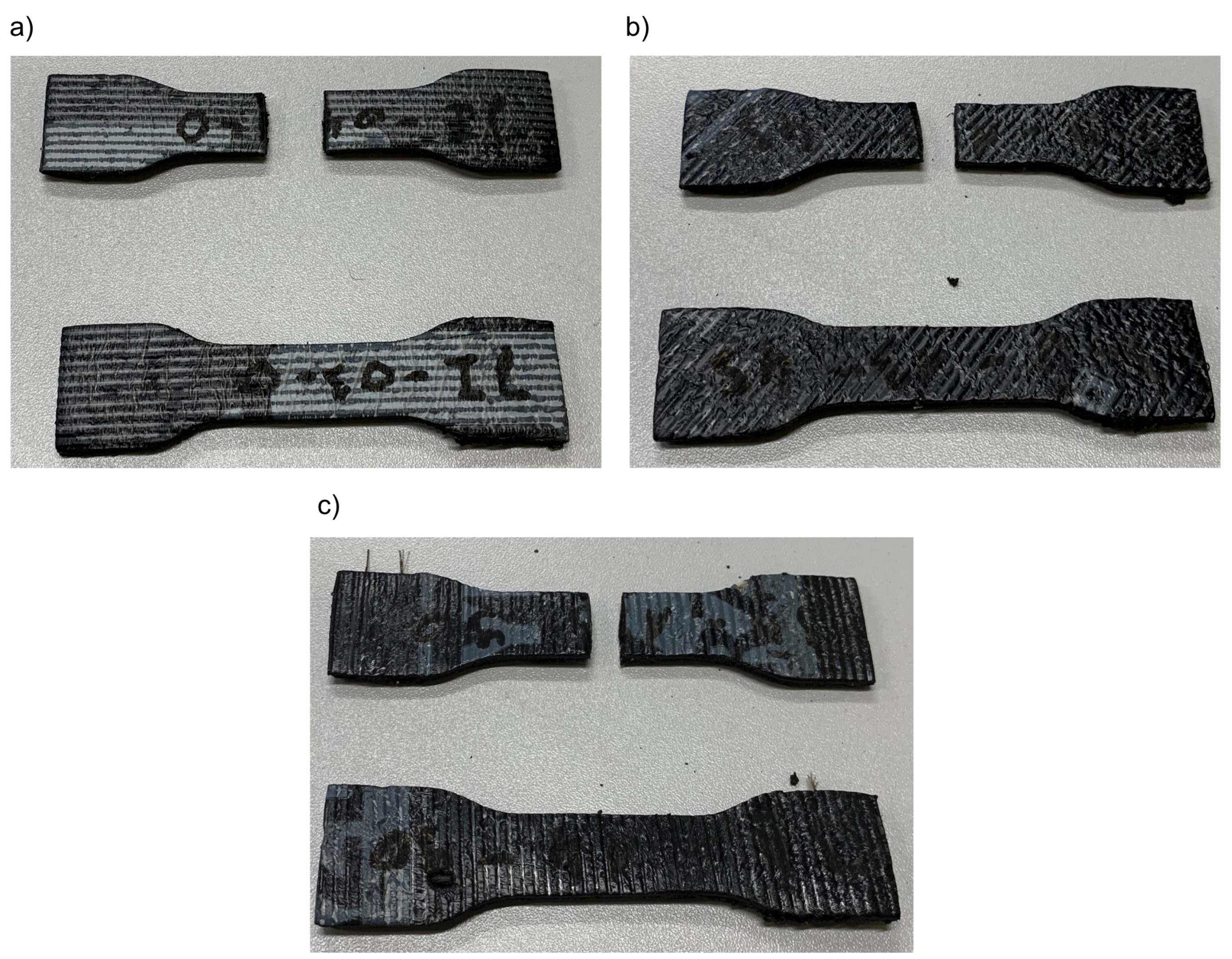
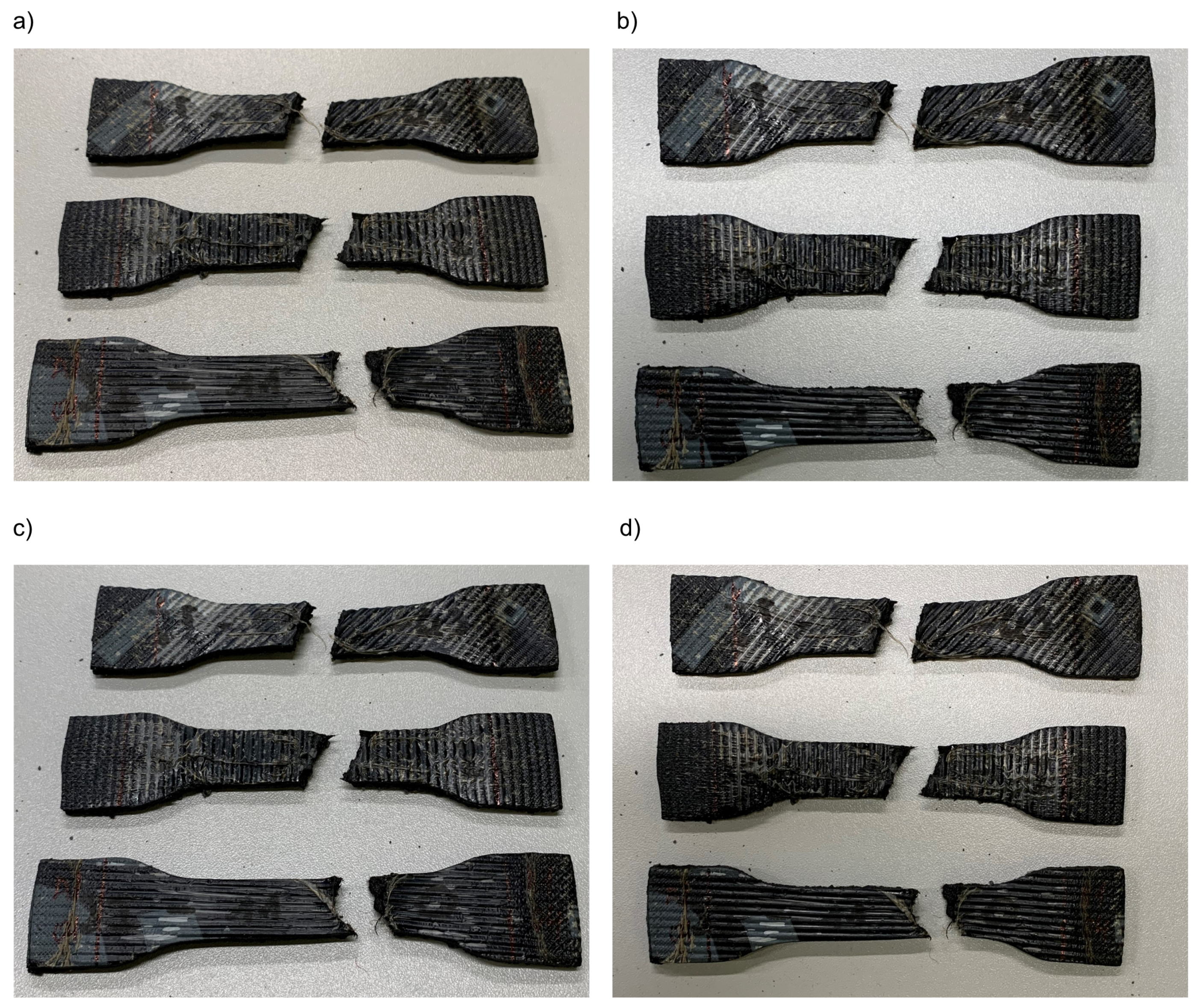

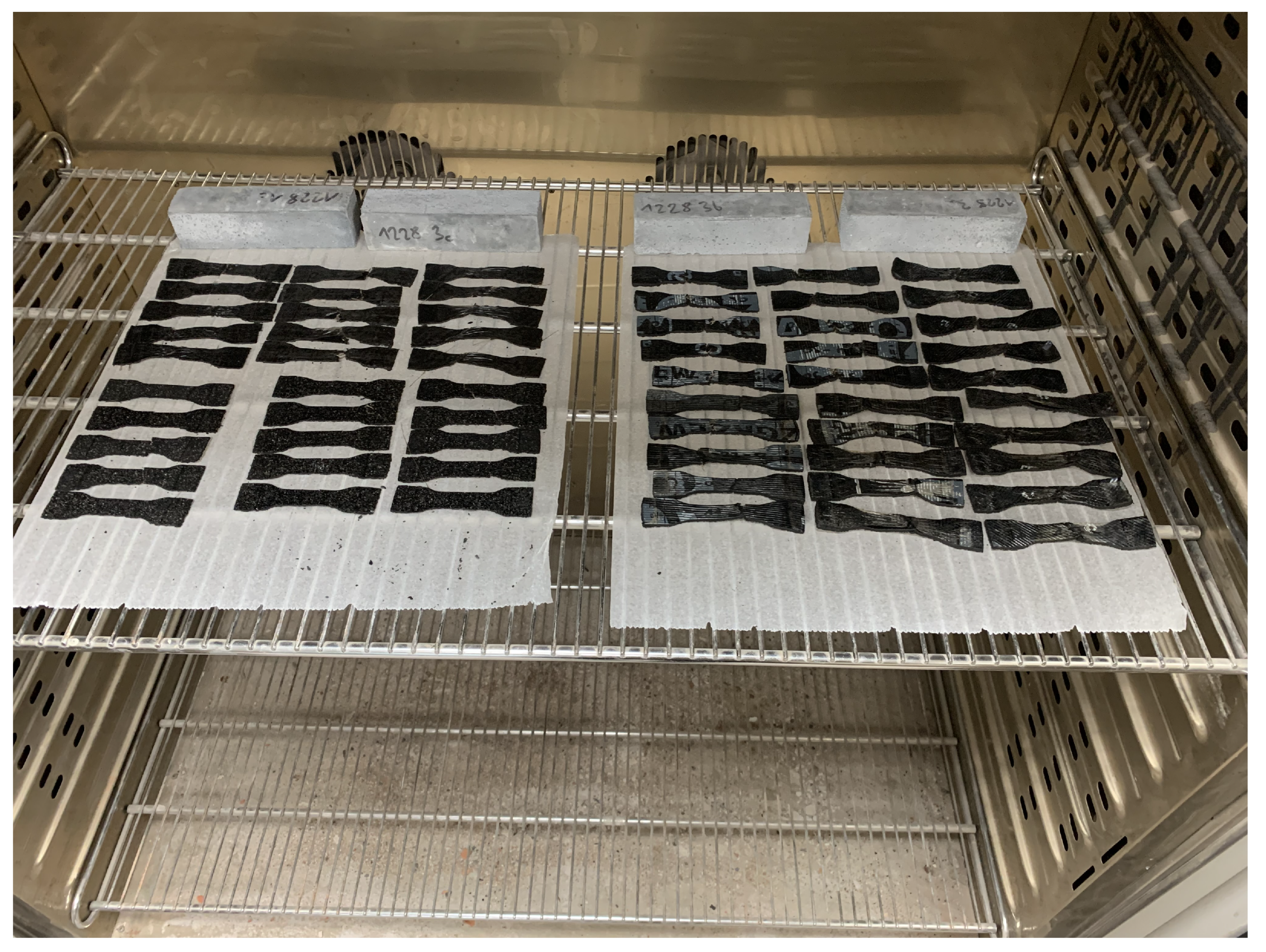
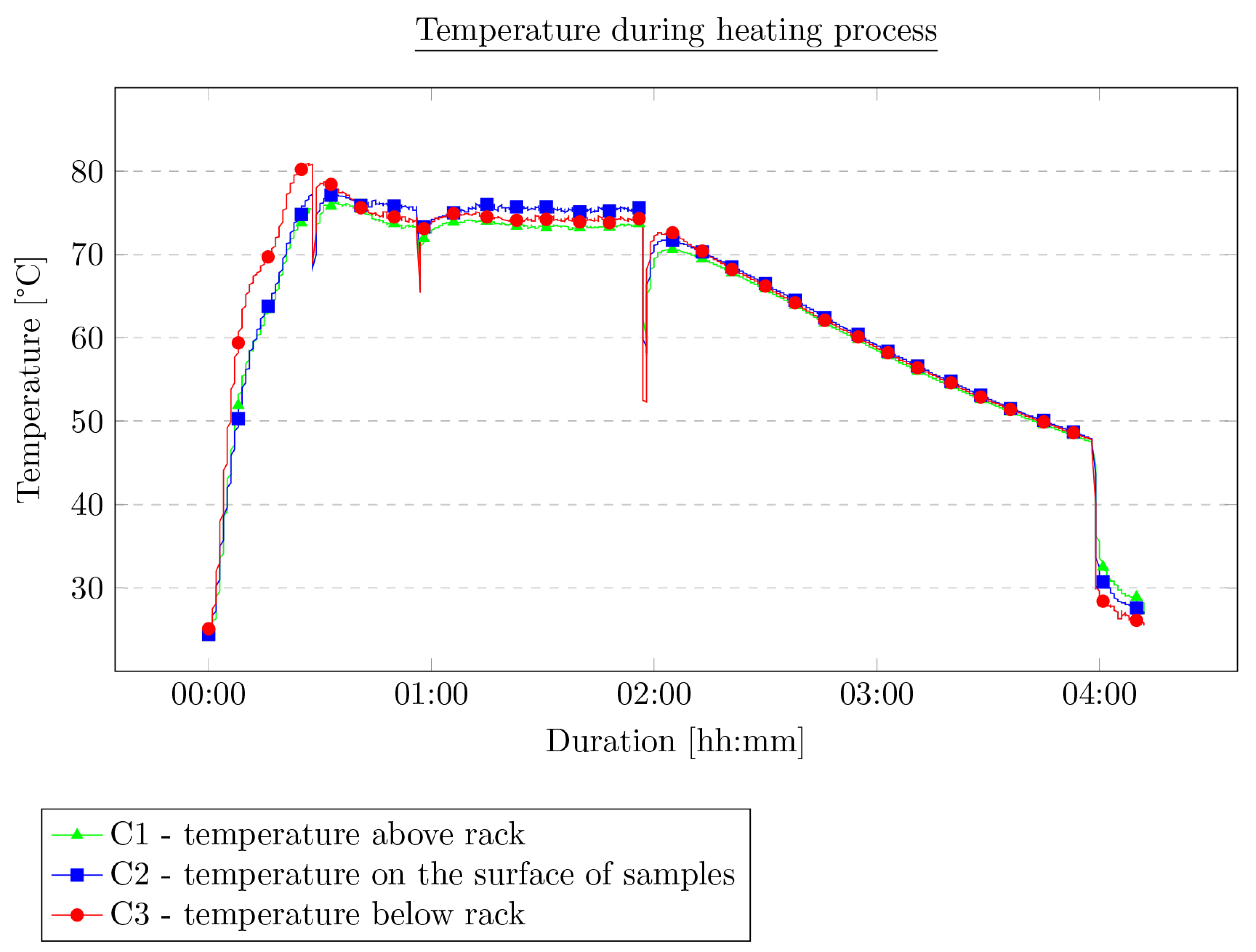
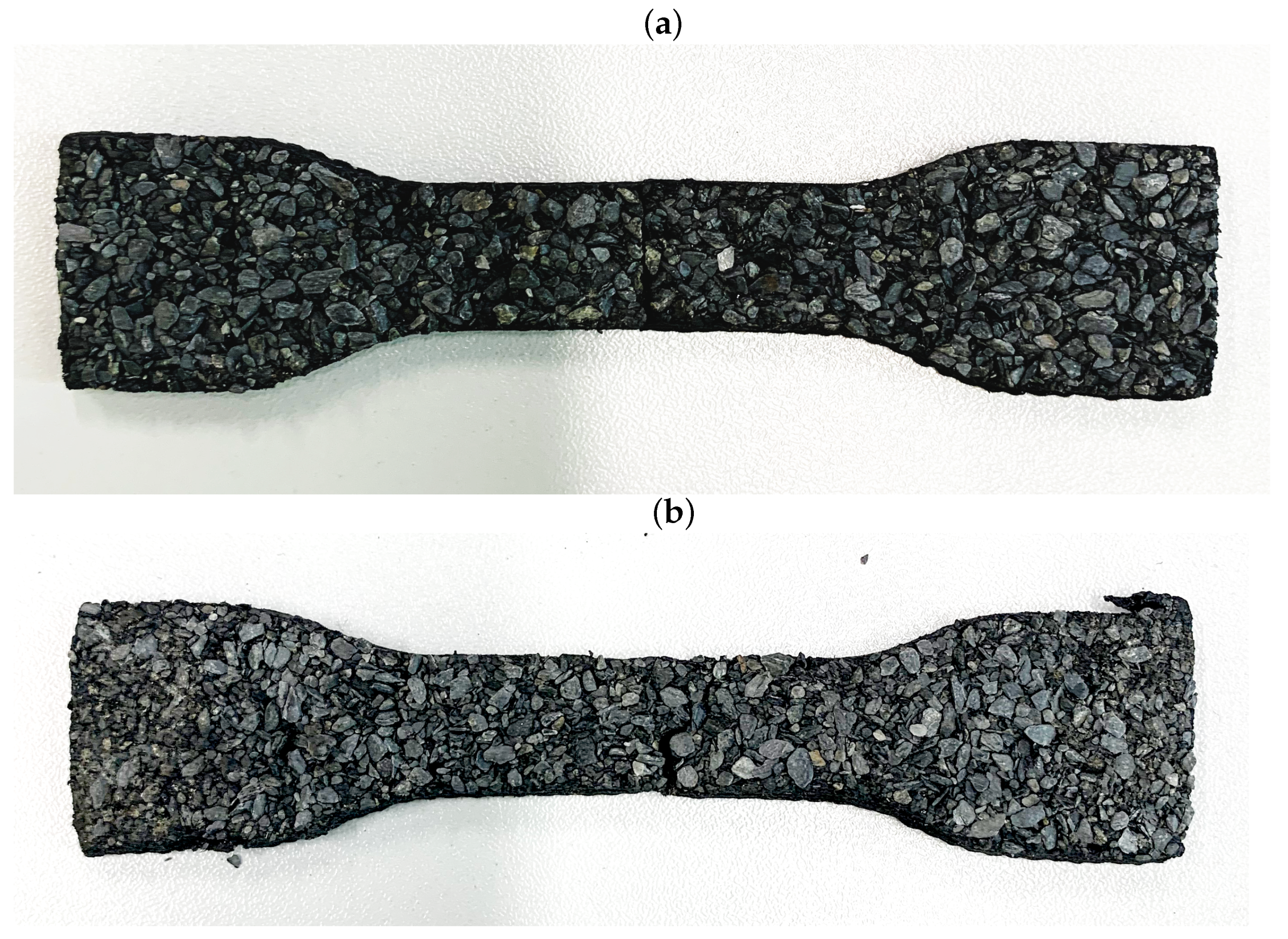


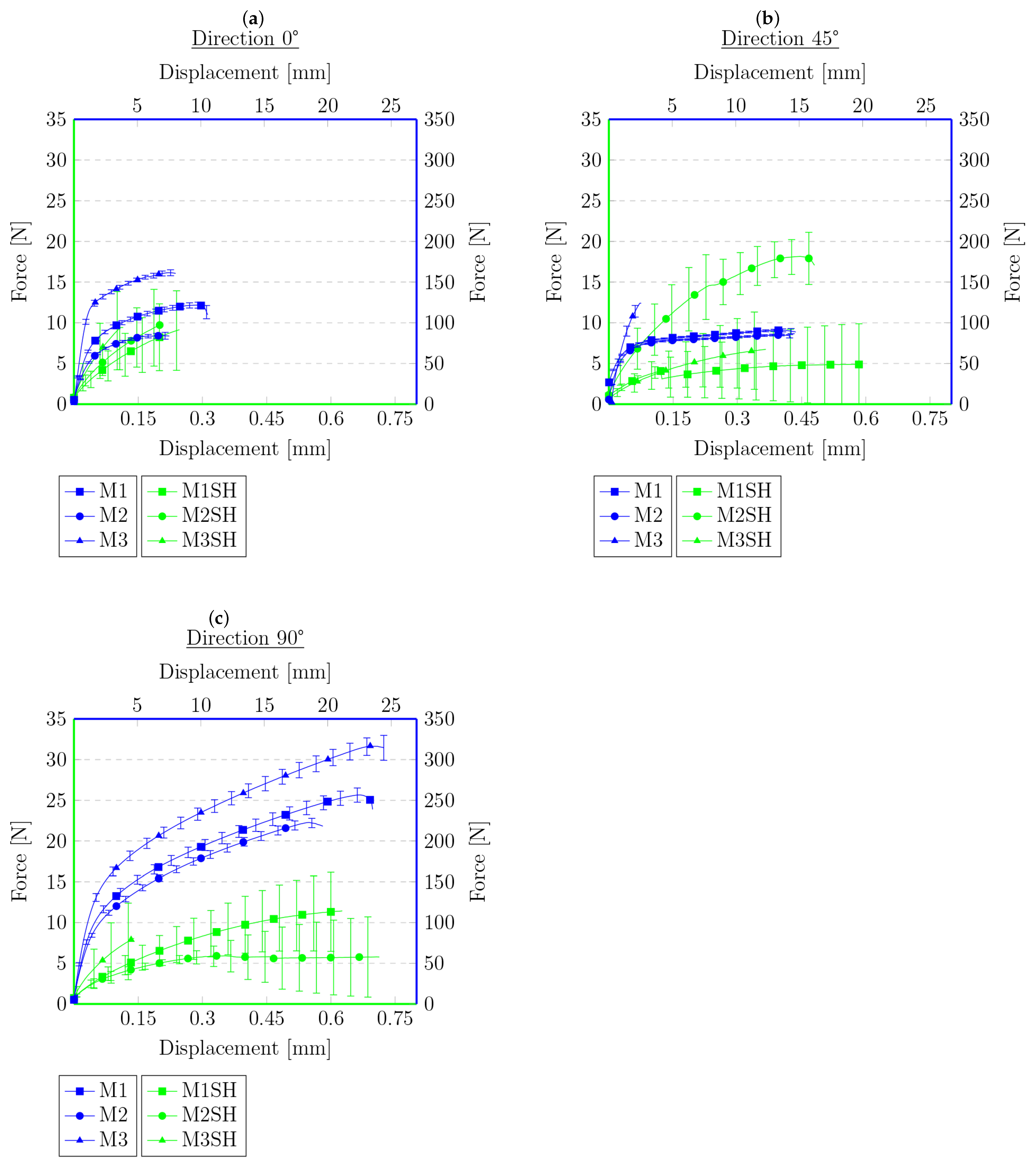
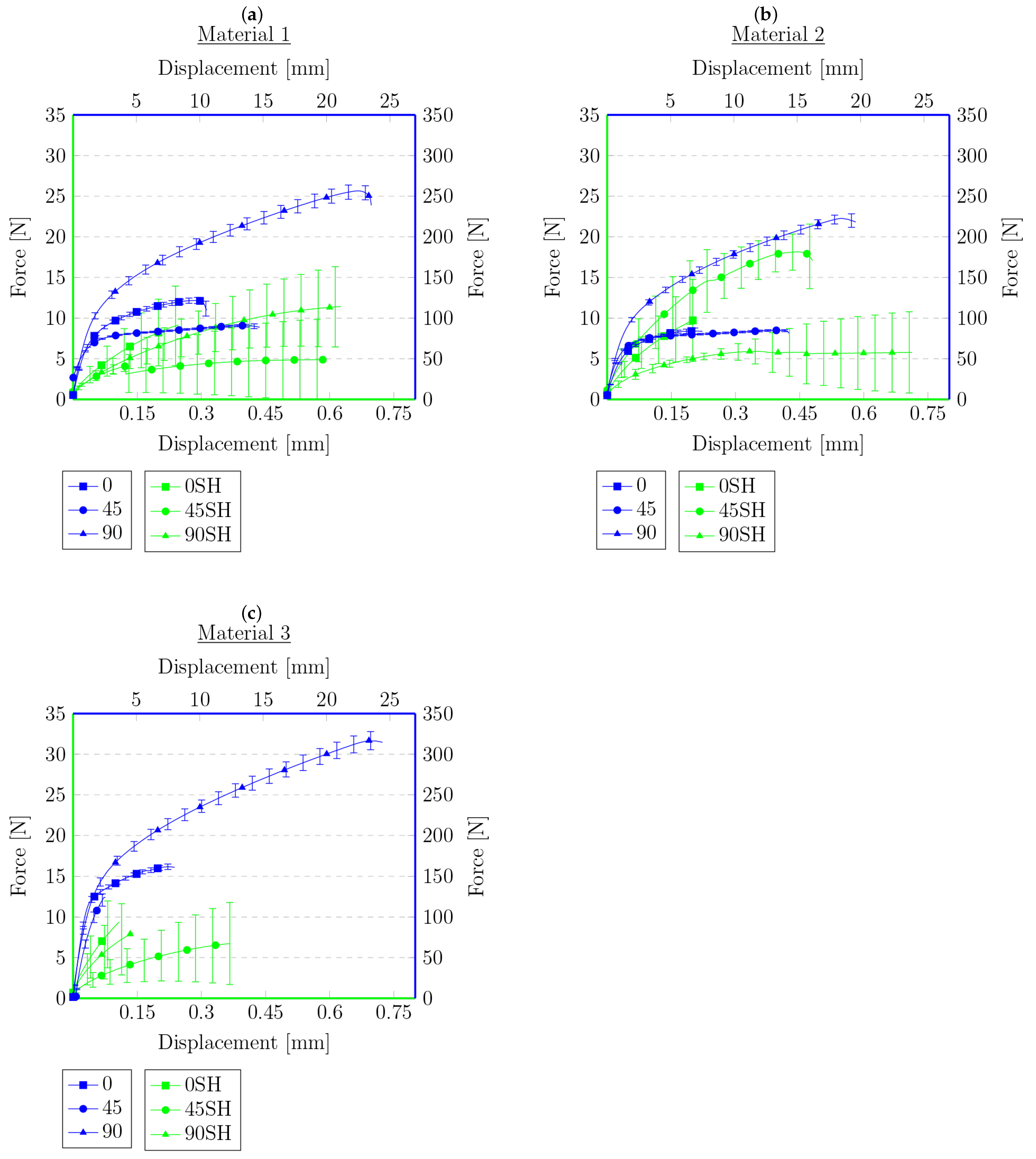
| Property Name | M1 | M2 | M3 | M4 |
|---|---|---|---|---|
| Matrix material | nonwoven polyester | glass veil | ||
| Base material | elastomer-modified bitumen | synthetic modified bitumen rubber | elastomer-modified bitumen | oxidized bitumen |
| Thicknes [mm] | 5.2 ± 0.5 | 2.2 ± 0.5 | 5.2 ± 0.5 | 2.2 ± 0.5 |
Disclaimer/Publisher’s Note: The statements, opinions and data contained in all publications are solely those of the individual author(s) and contributor(s) and not of MDPI and/or the editor(s). MDPI and/or the editor(s) disclaim responsibility for any injury to people or property resulting from any ideas, methods, instructions or products referred to in the content. |
© 2023 by the authors. Licensee MDPI, Basel, Switzerland. This article is an open access article distributed under the terms and conditions of the Creative Commons Attribution (CC BY) license (https://creativecommons.org/licenses/by/4.0/).
Share and Cite
Łuczak, B.; Sumelka, W.; Szymkuć, W.; Jopek, H. Self-Healing Mechanical Properties of Selected Roofing Felts. Materials 2023, 16, 1204. https://doi.org/10.3390/ma16031204
Łuczak B, Sumelka W, Szymkuć W, Jopek H. Self-Healing Mechanical Properties of Selected Roofing Felts. Materials. 2023; 16(3):1204. https://doi.org/10.3390/ma16031204
Chicago/Turabian StyleŁuczak, Bartosz, Wojciech Sumelka, Wojciech Szymkuć, and Hubert Jopek. 2023. "Self-Healing Mechanical Properties of Selected Roofing Felts" Materials 16, no. 3: 1204. https://doi.org/10.3390/ma16031204
APA StyleŁuczak, B., Sumelka, W., Szymkuć, W., & Jopek, H. (2023). Self-Healing Mechanical Properties of Selected Roofing Felts. Materials, 16(3), 1204. https://doi.org/10.3390/ma16031204








